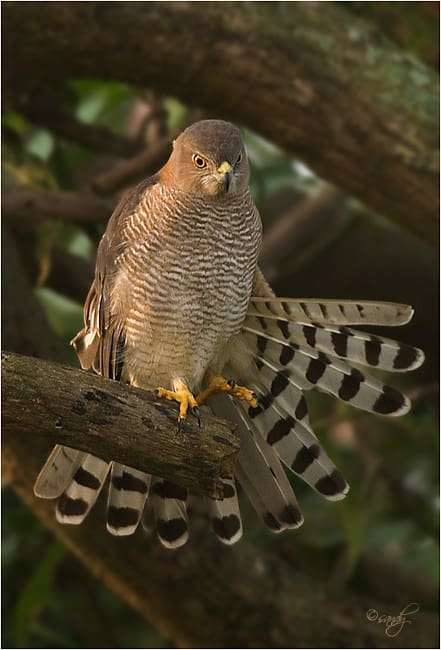I have a faint memory of my grandmother telling me about a small bird that swooped down from the trees and picked up the young chickens that she reared on her little farm. She called it “eramullan” in Malayalam. I had always wondered what it might have been but I never had a chance to see it considering that my visits were brief ten-day affairs.
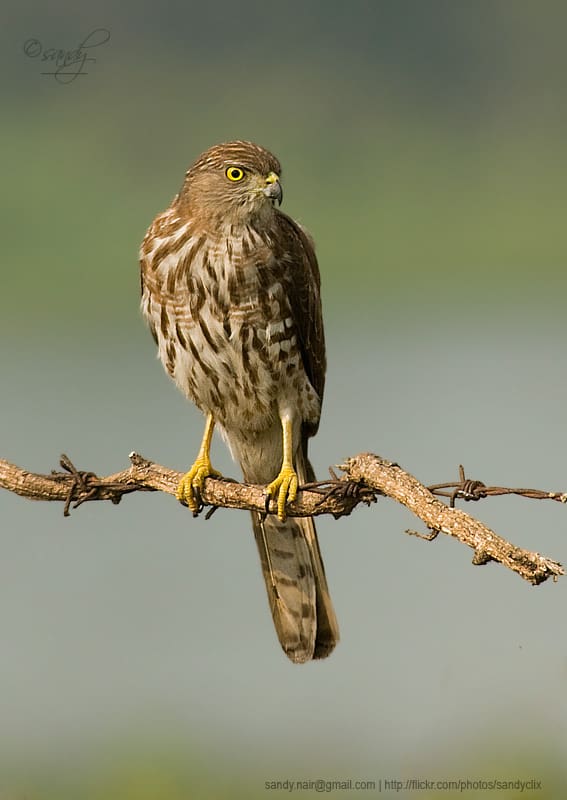 |
| An immature, with the underside plumage showing indications of transition |
My first brush with the Shikra (Accipiter badius) was at Mysore. I saw it perched on the branch of a small tree at Kukkarahalli Lake. The bird also goes by other names, such as Little Banded Goshawk, Little Banded Sparrowhawk, Indian Sparrowhawk, Northern Shikra, Shikra Goshawk, etc. Though I had seen the bird in photos my first sighting was so close that I got a very good look at its hooked beak and severe-looking talons.
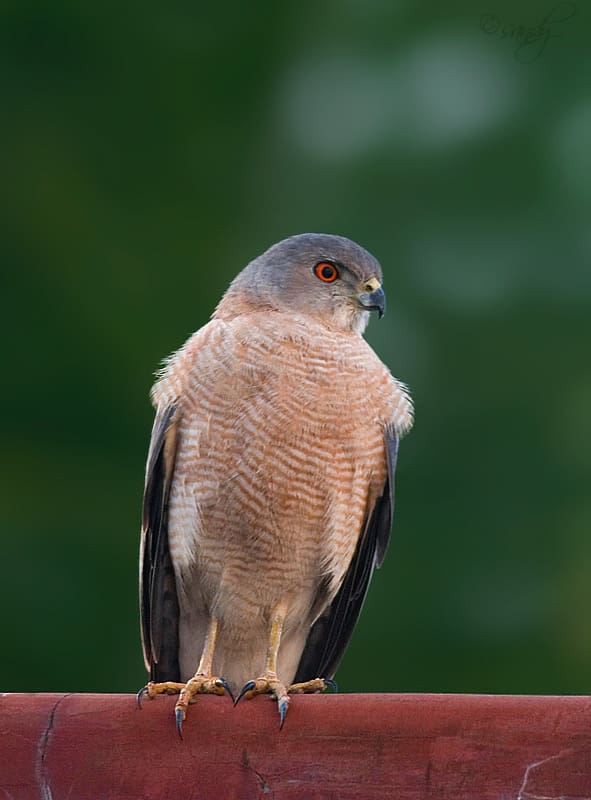 |
| An adult male, clearly an older one as indicated by the red eye |
 |
| An adult, probably male, in flight |
Ever since I have seen the Shikra everywhere — atop the terrace of the building next door, on electric poles, coconut trees, circling above… The flight pattern is like that of other Accipiters — a series of quick wing-flaps followed by a glide.
The Shikra exhibits two plumages, primarily. The young ones have brown upperparts and are heavily barred with yellow eyes. As they mature, the upperparts turn uniform slate-gray and the underside becomes heavily barred with horizontal rufous stripes. The mesial stripe becomes less distinct as the bird ages. The male, as it becomes older, develops a red iris while the female, larger in size as with most raptors, have deep yellow or yellow-orange eyes.
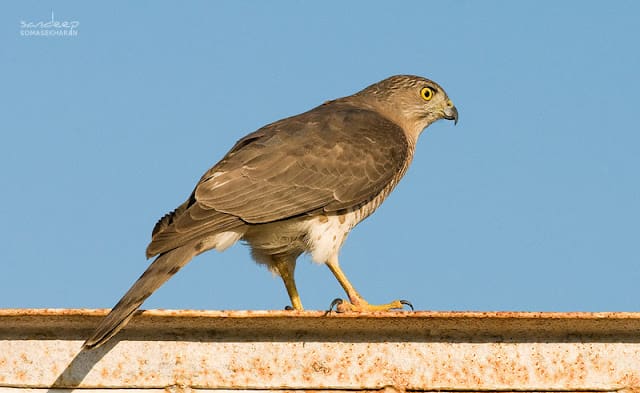 |
| A fully grown female |
Shikras feed on a variety of prey. I have seen them pick up winged termites immediately after the rains, chase pigeons unsuccessfully, swoop down upon Calotes lizards and — on one occasion — I saw it attack a grey francolin (Francolinus pondicerianus). In the last case, the francolin made a desperate attempt to get away by taking to its wings, though I couldn’t see what became of the chase that ensued.
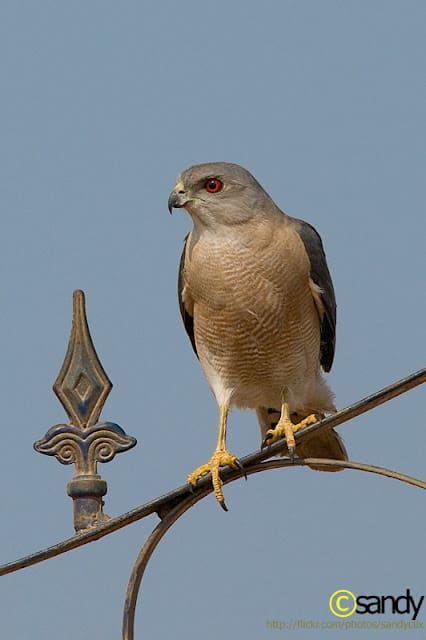 |
| An adult, older male perched on a gate in the outskirts of Mysore |
Shikras are hardy birds that have managed to survive the threats of urbanization. They are found all over the varied landscape of the Indian subcontinent, except on the upper reaches of the Himalayas.
Trivia – the Indian Navy has named one of its helicopter carriers INS Shikra. The word is derived from the Hindi “Shikara“, meaning “hunter”.
Text and photos by Sandeep Somasekharan
Latest posts by Sandy (see all)
- Costa Rica Diaries – Parting Gifts - May 5, 2024
- Costa Rica Day 6 – Resplendent Quetzal: Part Bird, Part God and Full-Time Economy Driver - April 17, 2024
- Costa Rica Day 5 – Toucan Trees and Wild Dreams Coming True - March 22, 2024

